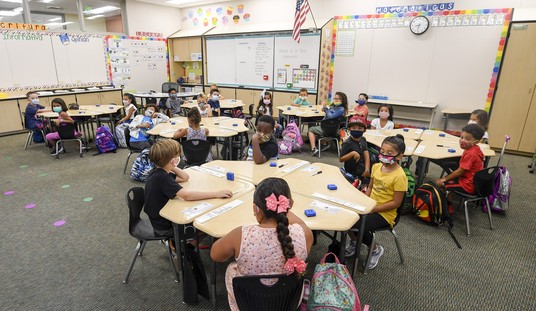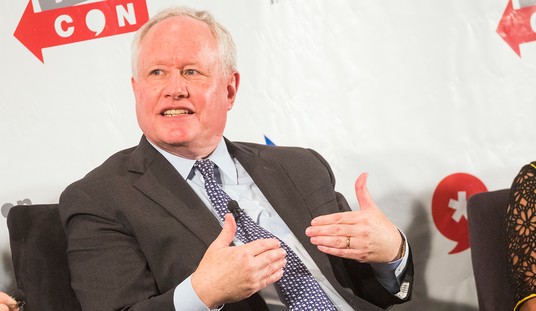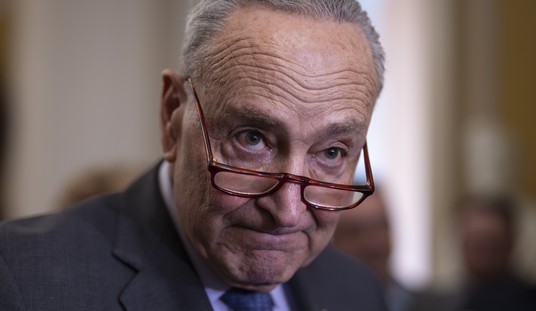Jazz wrote about this mystery on Tuesday and now print media is sniffing around it. On March 2, Greg Abbott announced that he would lift the state’s mask mandate and reopen most businesses at 100 percent capacity on March 10. That seemed rash at the time given the spread of more contagious variants across the U.S. plus the fact that Texas’s daily cases on March 2 (6,660) weren’t dramatically lower than they were on July 2 of last year (7,381), the day Abbott implemented the new mandate. Public health experts like Fauci and Rochelle Walensky warned him that he was risking a new spike.
Sixteen days after the mandate was lifted, there’s no spike.
On the contrary. Daily cases in Texas right now are almost exactly half of what they were on the day Abbott declared that restrictions would soon lift.

Where’s the new wave? Scientists are debating.
Mr. Van Deusen said increasing vaccinations and people taking precautions has helped keep the numbers low. “However, that can change, particularly with variant cases—mostly the U.K. variant–being regularly identified,” he said.
Cities like Austin have kept their mask mandates in place through local health rules, according to Matt Lara, an Austin Public Health spokesman…
Mr. Lara also noted that it hasn’t been two weeks since spring break and related activities, the first major event since the lifting of the statewide mask mandate…
Dr. Nandy said a big surge is unlikely, however, given the rate of vaccinations and a level of immunity from the many Texans who have contracted the virus in recent weeks and months. He also noted that hospitalizations are unlikely to spike, since a high percentage of high-risk individuals, like the elderly, have been vaccinated.
Lots of possibilities here. One: Masks and capacity limits on businesses don’t work. If that’s true then imposing restrictions or lifting them should have no affect on case counts. But studies contradict that, as does common sense. If the virus spreads by aerosols then covering one’s nose and mouth will block some of the aerosols one exhales, just as being prevented from entering public spaces will limit one’s exposure to aerosols exhaled by others. The effect from restrictions might be small, but there should be one. We’re not seeing it in Texas’s case counts, though.
Two: The wave is coming. It’s just not here yet. It’s possible that spring break will seed a big new rash of infections that hasn’t showed up in the data so far, but where’s the uptick from people simply having more interactions in businesses like restaurants, without masks? You wouldn’t expect a tidal wave after two weeks but you’d expect something.
Three: People are still avoiding businesses and wearing masks despite Abbott’s order. This seems likely, particularly given the fact that some cities have maintained restrictions. It may be that Texans were close enough to getting vaccinated when the restrictions lifted on March 10 that they decided of their own volition to lie low for a few weeks longer, until they can get the jab. Google’s mobility data for the state suggests some increase in traffic in retail spaces lately, but not a dramatic one:

Four: Texas vaccinated its way out of another surge. That’s a nice thought but it’s hard to justify. Texas is one of the worst-performing states on vaccinations measured by the share of its population that’s received first or second doses. Michigan leads it in both categories. And yet here’s the state of play in Michigan:

Detroit looks especially grim:
Is the United States considering a vaccine surge (or ring vaccination) targeting those areas? Are there other plans? (2/2) BTW, Metro Detroit is *continuing* to spike. Near 50 cases for every 100k residents per day. pic.twitter.com/1KKlRaOkdx
— Daily Detroit (@TheDailyDetroit) March 26, 2021
If Michigan hasn’t vaxxed its way out of a third wave it’s hard to see how Texas could have. Texas *has* had more confirmed cases of COVID over the past year as a percentage of the population than Michigan has had, which means there should be more natural immunity there. But it’s not wildly higher, around 9.6 percent versus 7.1 percent. Is that really the difference between steadily declining cases and a third wave?
Five: It’s the weather, stupid. I’m partial to this theory because it “feels” right. The weather in southern parts of America is beautiful right now, encouraging more outdoor activity where the virus is less likely to spread. Up north, there are still chilly days that are forcing people indoors to stay warm, where spread is more likely. Coincidentally, right now Vermont is experiencing a surge in cases and is barely off its winter peak. Connecticut, which also recently opened up, is also seeing a slow but steady increase in cases. Meanwhile, Mississippi, the other state that lifted its mask mandate around the time that Texas did, has seen its cases fall steadily. Could it be that southern states are getting a break from the climate?
If you scroll down here to the charts showing where cases are rising and falling, you’ll find that most southern states just so happen to be in the “falling” category. It’s not a perfect correlation — cases are also falling in Maine and rising in Florida — but it’s enough to lead one to wonder about a weather effect. If that’s what’s happening then the south may miss a third wave entirely. By the time we get to summer, when southerners will be back indoors to shelter from the heat, most adults will have been vaccinated.
There’s one more factor that may explain why Michigan, the northeast, and Florida are seeing upticks now:
2 emerging US surges: Michigan (B.1.1.7) and Northeast (B.1.1.7+ B.1.526). Both variants are vaccine responsive. They need very aggressive vaccination efforts + avoid relaxing mitigation. Not a single question to @POTUS today on covid, but this is the one I would have asked about pic.twitter.com/NCNmcyddX5
— Eric Topol (@EricTopol) March 26, 2021
Florida has seen the most confirmed cases of the British variant of any U.S. state. The weather plus the spread of variants in (mostly) colder, northern states may be driving the increases in cases. As for the vagaries of why the variants haven’t spread as extensively in Texas and across other parts of the south, that’s above my pay grade.








Join the conversation as a VIP Member